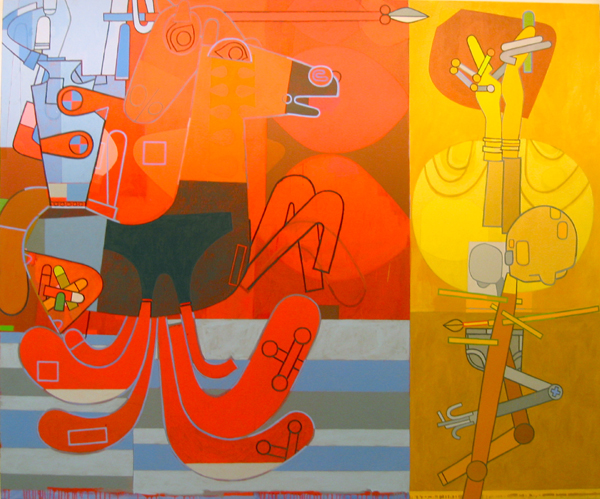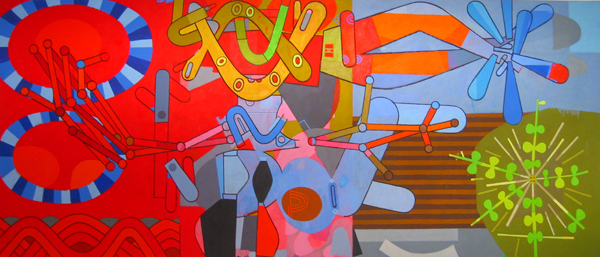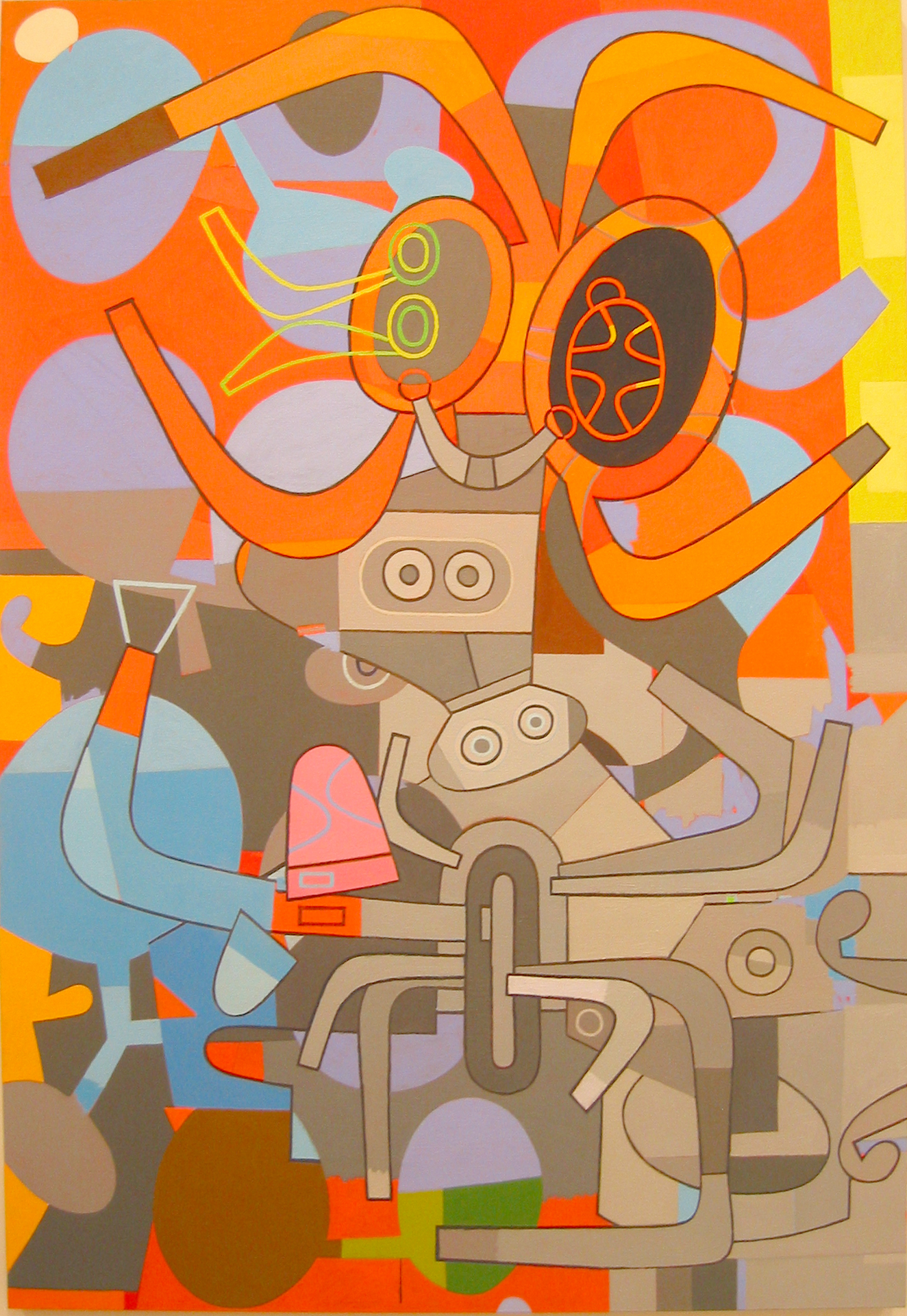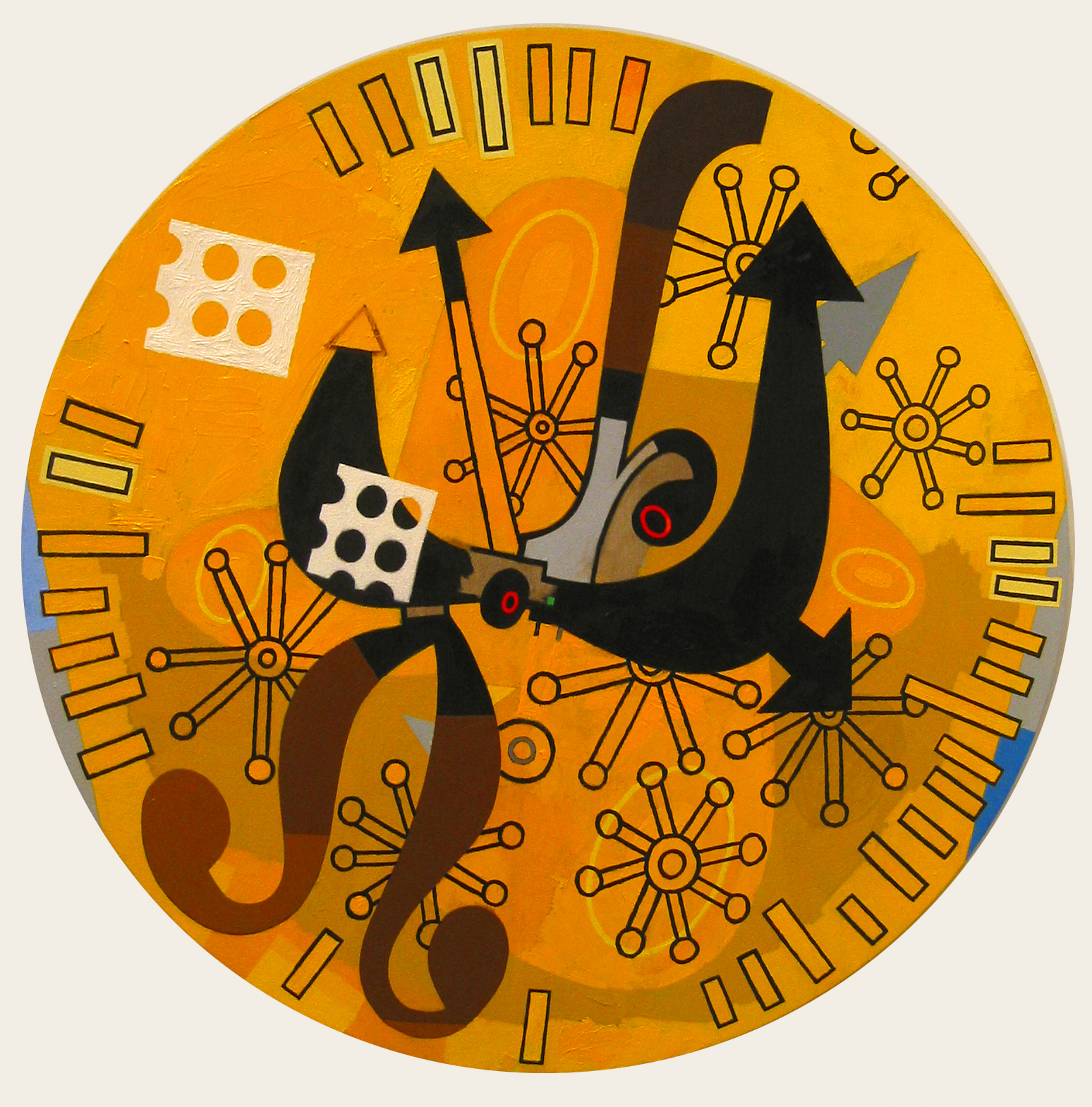David Storey
Curated by Trevor Winkfield
January 29 – March 6, 2004
David Storey, born in Madison, WI in 1948 is an artist who lives and works in New York City. He received both a BA and an MFA from the University of California at Davis, graduating in 1972. Storey exhibited with Jay Gorney Modern Art in the mid 1980's and with Hirschl and Adler Modern from 1986 to 1993. He has participated in numerous group exhibitions in the United States and abroad.
He has received a National Endowment for the Arts Fellowship Grant, a New York Foundation for the Arts Grant, the Milton and Sally Avery Residency at Yaddo, and grants from the Elizabeth Foundation for the Arts. He is married to the artist Jane Kent. They have a son, Jack.
Trevor Winkfield was born in Leeds, England and after studying painting at the Royal College of Art in London he moved to New York City in 1969, where he has lived ever since. His work is represented by Tibor de Nagy Gallery. A book on his paintings and drawings, Trevor Winkfield's Pageant, with essays by Jed Perl and John Ashbery, was published in 1997 by Hard Press. Besides painting, he has collaborated extensively on books with poets of the New York School, including John Ashbery, Harry Mathews, Ron Padgett, Charles North, Larry Fagin, John Yau and Christopher Edgar. His essays on Vermeer, Florine Stettheimer, Joseph Cornell, Chardin, Jasper Johns, Gerald Murphy, Myron Stout, Leonardo da Vinci, John Graham, George Braque and others have appeared in such magazines as Art in America and Modern Painters. He is a Guggenheim Fellow and a Chevalier dans l'Ordre des Arts et des Lettres.
ARTIST'S STATEMENT
Ten Aphorisms, Two Epigrams and a Quip
TEN APHORISMS
Painting is trans natural.
Good and bad colors reflect the same light.
Painting is always about here and there.
All thought is a manual skill.
There are no adjectives in black and white.
Looking's erosion.
Blue is a monument to the memory of red.
Beauty is like a rock on the ground, hard and still and everywhere.
Some colors are detergent, others solid steel.
TWO EPIGRAMS
1
The oracle stutters, our Sybil's asleep -
My themes, it seems, are not so deep
2
Any shape needs arms and legs
(one head and a few small feet)
Overlapped and clarified,
Mute, but born to speak.
A QUIP
Style is sanity
CURATOR'S STATEMENT
by Trevor Winkfield
If one of the basic tenets of early Modernism involved a shift from figuration towards abstraction - a progression sometimes swift - a later painterly strand promulgated its exact opposite: figuration leads to abstraction … which in turn begets further figuration. Witness the evolution of Hélion and de Kooning, to name only two of "the confused." A step further, and the coexistence of abstraction and figuration in a single painting - still, for some of us, the most fertile field opened by Modernism - unleashed a slew of subsidiary benefits for the viewer. We can now look at nudes with the eyes of a landscapist, or scrutinize a still life from the viewpoint of a portraitist. And, if one is of a mischievous bent, Mondrian can register as both linoleum and picture plane. All that's required is a sense of humor.
Seventeen years ago, the painter and critic Stephen Westfall wryly observed of David Storey's paintings: "I sometimes see his imagery as walking a tightrope between the museum and the cocktail napkin cartoon." That may have been the case then, but now I for one no longer see that tightrope, high and low in the meantime having gelled, like the two halves of a stereoscopic view finally brought into focus.
Storey derives from that generation which first came to prominence in the 1980s, the generation which regarded Modernism's styles as either quarries to mine or nurseries to play in. Everything was up for grabs since, as Storey noted, "There was more ore there than we thought." Thus, echoes and quotes from the biomorphism of Miro abut hard edges purloined from the Bauhaus; hats are doffed to Klee's wittiness and Newman's sobriety. But all debts are freely acknowledged before being ploughed back into Storey's personal surfaces. And with a great deal of buoyant humor, one might add, a humor deriving from daily doses of childhood television (Storey was a denizen of Southern California, after all). The quotidian, in fact, has always played an important role in structuring his paintings. Though he's careful to disguise his subject matter beneath layerings, outlines of cumbersome furniture, chair legs revolving on lathes and all manner of gears and cogwheels can be detected. But all has been turned upside down and crammed into a mad inventor's laboratory.
The paintings, begun in acrylic and finished in oil (acrylic allows Storey to work quicker in the initial stages) utilize color to "equate humor with profound joy and express big truths without succumbing to pretension." This almost goes without saying, since Storey - for a serious painter - has always struck me as one of the most genial painters of his generation. Not that there's been much competition. Unusually for a New York painter, misery has been banished from his emotional repertory - there's barely a glower in his entire oeuvre. Though his hues can evoke subterranean depths, he invariably surrounds them with a brightness redolent of desert islands. Or supermarkets stranded on desert islands.
His paintings' cut and dried divisions eschew blending: everything has its place, layered one atop another or side by side. Yet opposites attract across this flatness. Tall static bundles of inert paint jostle heraldic fields where more succulent paint preens itself, and from one edge of the canvas metallic grays signal to vermillion patches across the way, enabling our eyes to ferry across the center. Storey is as much traffic warden as town planner.
Knowing that Storey began as an abstract painter - never painting from the model, even as a student - can lull us into regarding his works as purely formal statements. On the one hand, pondering how smartly he's slotted his horizontals into his verticals, on the other tracking his brushstrokes along their runic routes. But just when we think we've figured out what a "Storey" involves, lo and behold a stable door opens and here, in the latest canvases, unexpected horses prance into view. As the serials promise: To Be Continued.
View CATALOGUE





